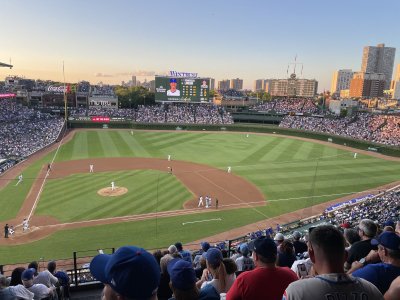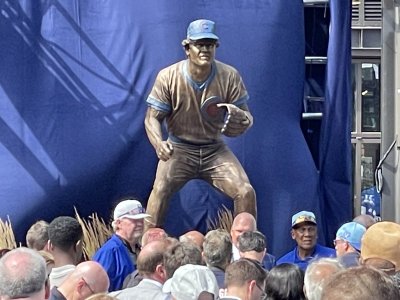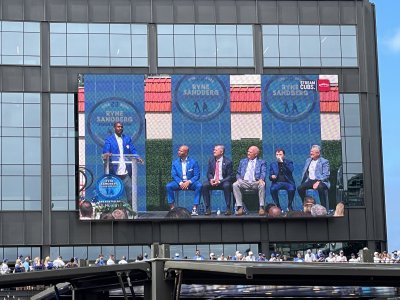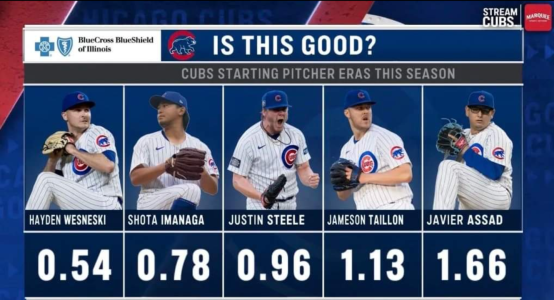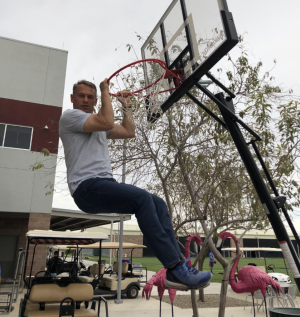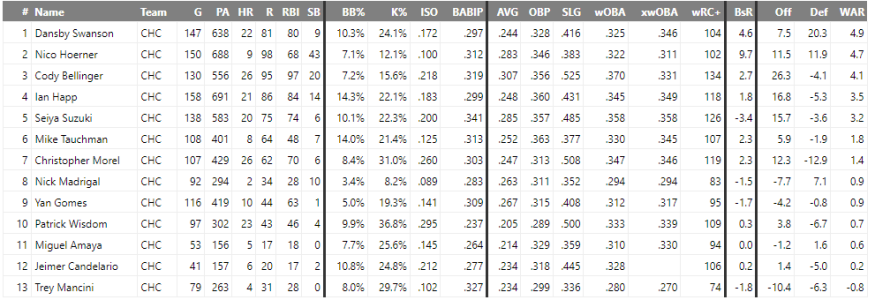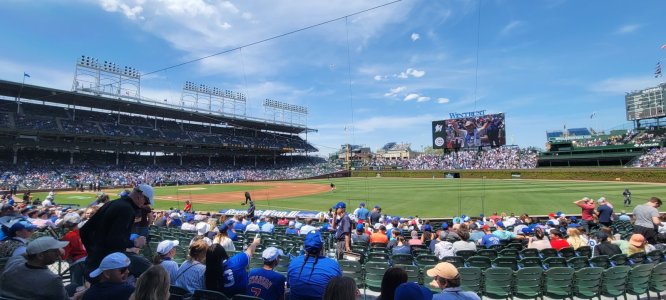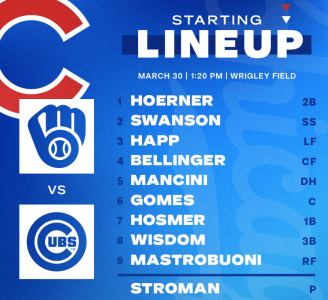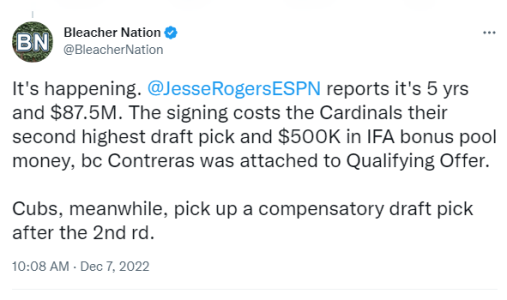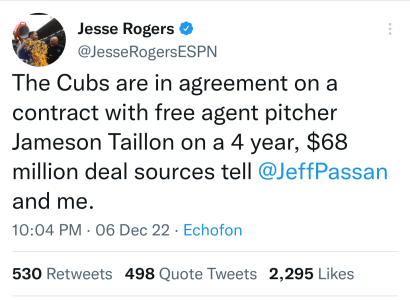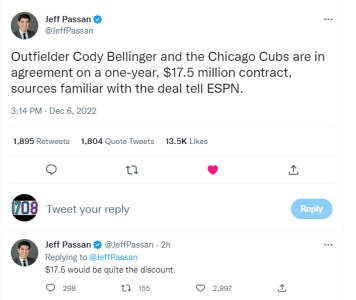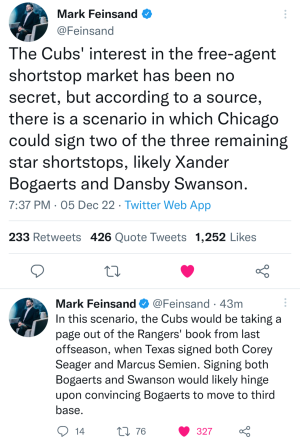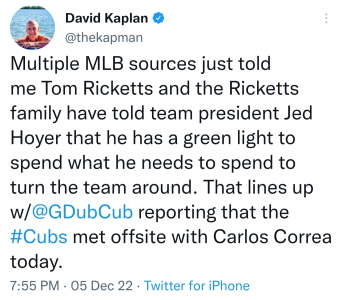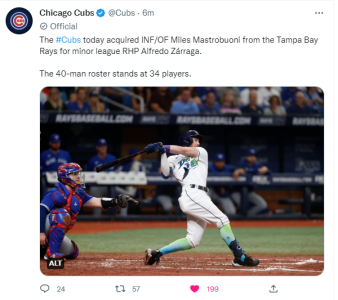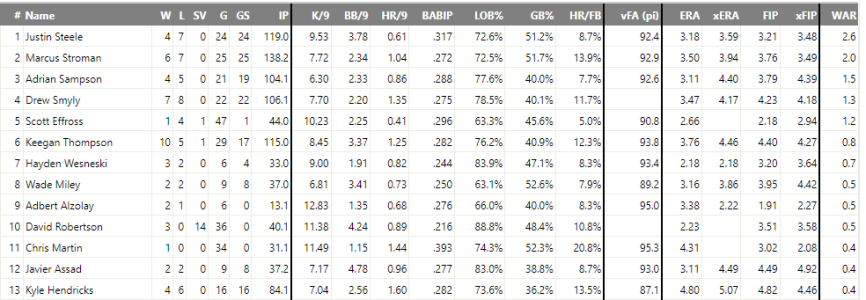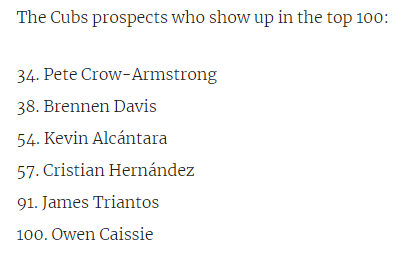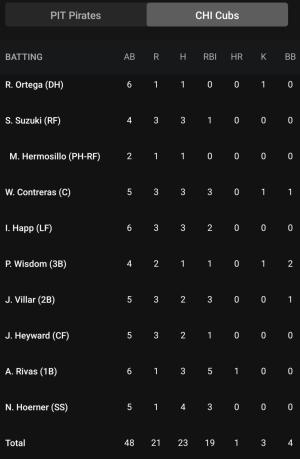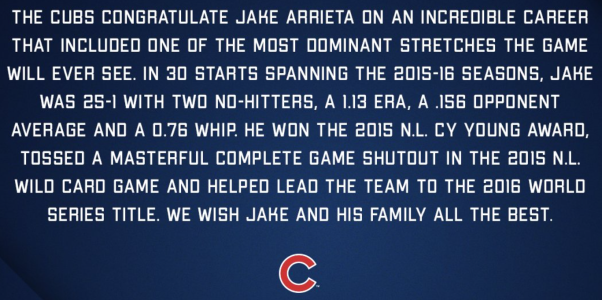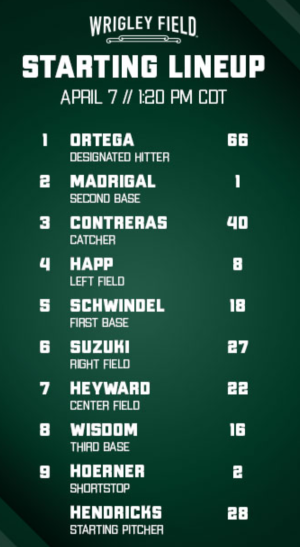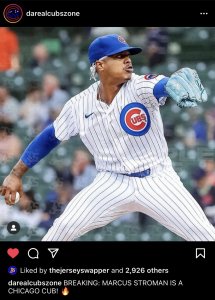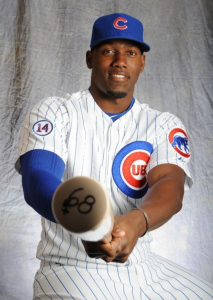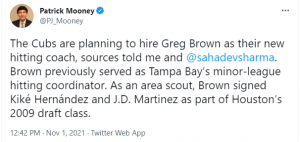If Major League Baseball is in the
age of the superteam, the Chicago Cubs are at least partially to blame. When they built their
championship roster for 2016, the Cubs combined
effective tanking with
savvy offseason pickups to create one of the
best baseball teams ever. But they were quickly succeeded by the Houston Astros, who won the following year
using a very similar blueprint. Between the rise of the
historically dominant Astros and Los Angeles Dodgers (who didn’t tank but mixed a
great talent pipeline with
outrageous spending) — to say nothing of the
Cleveland Indians or New York Yankees — the Cubs were losing their cachet as a World Series frontrunner. They’d become victims of an era they helped touch off.
But Chicago took a big step in reversing that slide Saturday, inking starting pitcher Yu Darvish
to a six-year deal worth $126 million. In doing so, the Cubs are climbing away from the
no-man’s-land between the top contenders and the tankers, ensuring that
Kris Bryant and Co.’s most cost-effective seasons are spent pursuing another championship.
Darvish remains one of the best pitchers in baseball, and he’s a major addition to the Cubs’ roster. Since Darvish came over to MLB from Japan as
a 25-year-old, only
17 other pitchers have created more wins above replacement (two of his new teammates, Jon Lester and Jose Quintana, rank above him). Darvish has never been worth less than
3.5 WAR when he played a full season, and he contended for the Cy Young award in his first two years in the league.
His most recent few seasons have had their challenges. The Japanese sensation went down
in 2014 with an injury that required Tommy John surgery, and the recovery period kept him out for the whole 2015 season. Then,
amid concerns over whether he was
tipping his pitches, Darvish put up the worst numbers of his career in
ERA and fielding-independent pitching in 2017. And he struggled in his postseason stint with the Dodgers, posting two of his
worst starts ever.
But that didn’t deter the Cubs from signing him — nor should it have. Setting small-sample-size concerns aside, Darvish was
one of the best free agents available, and he projects as one of the
top 20 starters in baseball. Acquiring him at the relatively paltry price of $21 million per year is one of the best bargains of the anemic 2018 offseason. For reference,
FanGraphs projected going into the winter that Darvish would get a five- or six-year deal worth between $24 and $28 million per season. But thanks to one of the
slowest free-agency periods in recent memory, Chicago ended up landing a top ace for much less money than anyone would have expected
Darvish complements a Cubs rotation that may become one of the best in the league again. According to
FanGraphs’ projections, Chicago now has the third-best rotation in the game, trailing the first-place Dodgers by less than two WAR.
That represents a big improvement over last season, when the Cubs’ starters had slipped to
10th in the majors in WAR. One of the keys to Chicago’s 2016 World Series run was having the
third-best rotation in the game, but the next year saw an
across-the-board drop-off in performance from the Cubs’ big four of Lester, Kyle Hendricks, Jake Arrieta and John Lackey, which played a large role in Chicago’s
championship hangover. The additions of Darvish, Tyler Chatwood and 2017
trade-deadline pickup Quintana ought to help Cub pitching bounce back.
And perhaps most importantly, Darvish inches the Cubs back toward the top of the MLB heap, in addition to giving them a leg up in what looks like a
tough division (which features two of the few teams that have made a lot of offseason noise, the
St. Louis Cardinals and
Milwaukee Brewers). Before the signing, Chicago
was projected for 47.7 WAR by FanGraphs — not much more than the Cubs’ archrival Cardinals. After the deal, that number moved up to
50.1 WAR. It might not sound like much of a difference, but in baseball,
incremental improvements can
pay big dividends at the high end of the talent spectrum. Once a team’s projected win total reaches the mid-90s — and 50.1 WAR
translates to about 98 wins over a full season — each additional win is worth nearly 1 extra percentage point of World Series probability.
The benefit could be even greater in a season like the one 2018 is shaping up to be. We gathered
preseason win forecasts Averaging together Baseball Prospectus’s PECOTA with Vegas’s over/unders.
for each season since 2005, tracking how often teams were projected to finish with a given number of victories. From 2005 to 2017, an average of 17.4 of MLB’s 30 teams were predicted to win between 80 and 94 games each season, with 0.7 teams projected to post a better record and 11.9 projected to do worse. This season, however, only 12 teams are in that 80-to-94-win bucket, versus 4 teams above and 14 below. Baseball’s class of decent-but-not-great teams seems to have given way to clubs that are either going all-in or punting on the season entirely. In a season like this, that middle ground — where the Cubs were tracking to be — would be the worst place to find yourself.
But after signing Darvish, the Cubs officially moved closer to the front-running Astros and Dodgers in
the projections than to the next tier of teams (which includes the Indians, Yankees, Nationals and Red Sox). They prevented themselves from being left behind in MLB’s superteam arms race, and they did it for a relatively cheap sum. Although the landscape of baseball has changed a lot since Chicago won it all in 2016, the 2018 version might bring back memories of that star-studded Cubs team.











